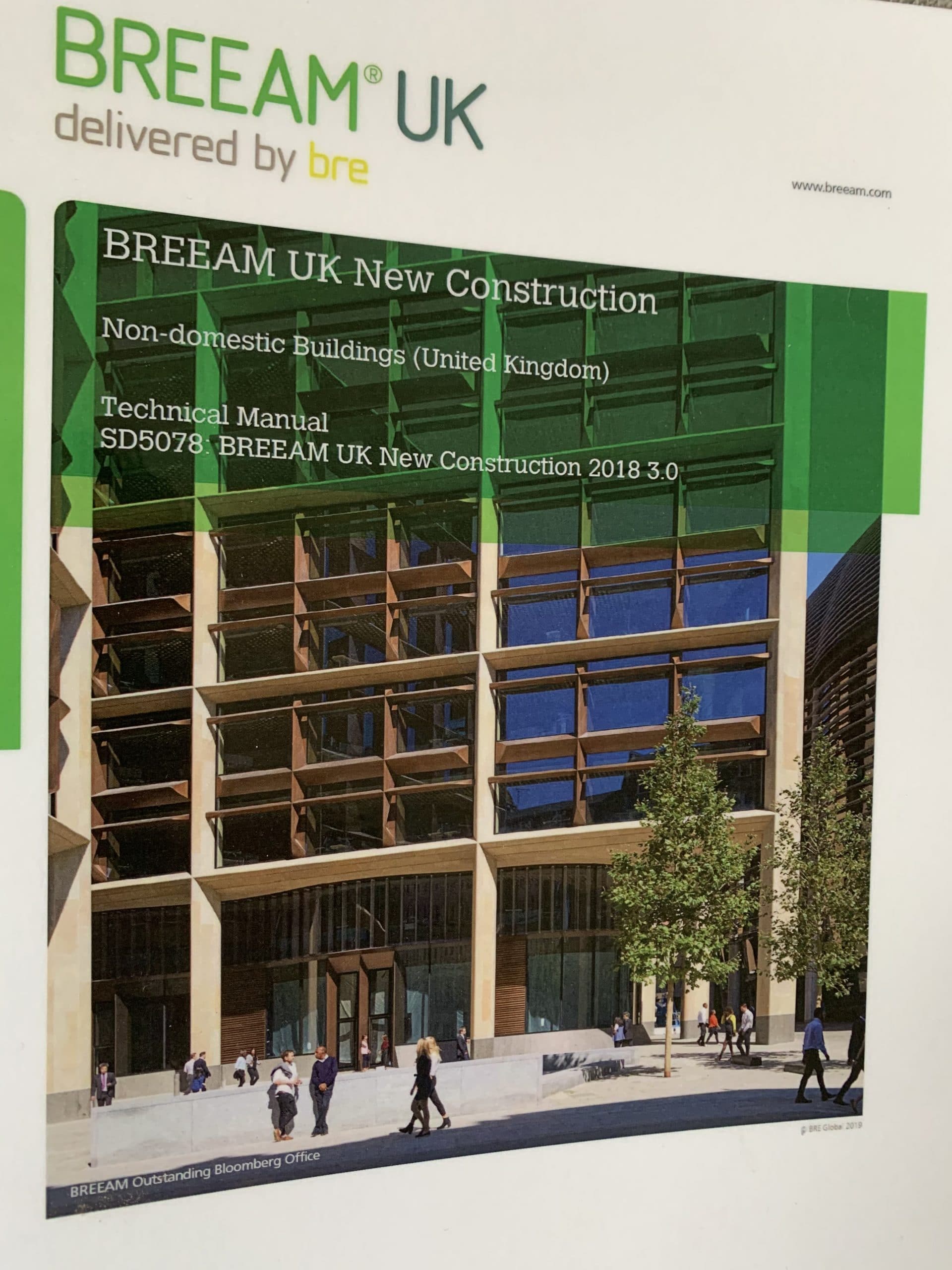The BREEAM accreditation system is based on the acquisition of BREEAM credits. In this week’s article, we’re digging into what BREEAM credits are and why they are so important.
BREEAM has a pretty big reputation under its belt; the Building Research Establishment Environmental Assessment Method is the world’s longest established method of assessing, rating, and certifying the sustainability of building.
It’s been around since 1990 and it’s the international benchmark of a truly sustainable building. While it has changed over those two decades (haven’t we all?) its overall ethos has stayed the same: it strives to minimise the negative impact that buildings can have on the local and global environment, with a specific focus on a building’s life cycle.
The BREEAM accreditation system rests on the awarding of BREEAM credits.
What are BREEAM credits? BREEAM credits are requirements attached to different sustainability categories. Each category represents an issue within a building project, and all carry a specific weighting based on its level of importance in the green agenda.
The categories have a certain criteria under which an architect, developer or builder will need to fulfil. They will be ‘awarded’ credits dependent on their response to that criteria.
It’s a tried and tested system; one that’s been working for – let’s face it – a hefty time. That’s why we’ve decided to take a closer look at the BREEAM credit system… we hope you find it valuable!
What are the different BREEAM credit categories?
The BREEAM credit categories are broken down into 10 different requirements. Accreditation is driven through the successful attainment of these credits, with the final sustainability rating decided by the percentage of available credits awarded.
This will be carried out by a trained BREEAM assessor. They’ll join you at two different stages: the design and then post construction. During the first stage, you will receive a provisional rating and interim certificate, followed up by your final rating and official building certification.
Below you will find a graph showing the different issues and their weighting (split across fully fitted out, shell only, and shell and core only builds).
| Issue | Fully fitted out | Shell only | Shell and core only |
| Management | 12 | 12.5 | 11 |
| Health and wellbeing | 15 | 10 | 10.5 |
| Energy | 19 | 14.5 | 15 |
| Water | 6 | 4 | 7.5 |
| Materials | 12.5 | 17.5 | 14.5 |
| Transport | 8 | 11.5 | 10 |
| Pollution | 10 | 6 | 11 |
| Land use and ecology | 10 | 13 | 11 |
| Waste | 7.5 | 11 | 9.5 |
| Innovation (additional) | 10 | 10 | 10 |
The scheme is designed in a way that champions flexibility; the idea is that you can handpick certain issues that the building should be assessed on, permitting that certain minimum standards will be attained.
Zero Waste Week and BREEAM waste credits.
You might have noticed the ‘waste’ category on the BREEAM credit chart.
Since 7 – 11 September marks Zero Waste Week, we thought we would pick that credit out and look into it in finer detail.
The ‘waste’ requirement on the BREEAM standards focuses on the promotion of schemes to bring about the reduction of waste during the construction phase of a build. It also looks at what a project puts in place to avoid waste being sent to landfill durings its operational life.
When considering the ‘waste’ elements of a BREEAM assessment, the assessor will look at how sustainable the management is of the project waste. This includes:
- Reusing the waste where possible
- Waste generated during construction, operation and through maintenance and repair
- Whether you are able to reduce the amount of waste produced in the first place
- Any efforts to reduce future waste
The benefits of zero waste are enormous, and something we should all – especially home builders – strive for. As members of the construction industry, it’s crucial that we do what we can to keep our materials and waste away from landfill so that we can minimise our pollution and lower our carbon footprint.
So, regardless of BREEAM standards, these are crucial guidelines to keep in mind during the design phase of your project!
Does Buildpass provide BREEAM assessments?
We do indeed!
We are trained BREEAM assessors, and we have the experience and knowledge to guide you during those initial concept stages so that you face minimal impact to your build, while achieving those glowing BREEAM standards.





















